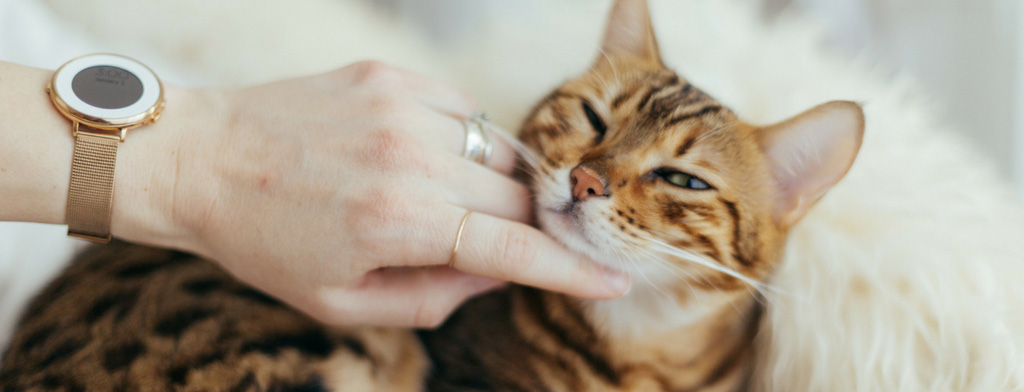
HOW TO RUN A CAT FRIENDLY CLINIC
Becoming a cat-friendly practice requires a high level of commitment - but in doing so, success for the clinic is almost guaranteed!
THE BENEFITS
The striking advantage to becoming cat-friendly is that the veterinary team will find that cats become easier to treat. With increased knowledge of cats, the team would be able to allow cats to face minimal stress when at the practice and therefore allow them to become relaxed and cooperative. Also, owner satisfaction upon visits will exponentially increase, establishing potential for the clinic’s customer base to expand through recommendations.THE INITIAL STEPS: AN INTERNAL ASSESSMENT
Before working towards the title of being cat-friendly, your practice must reflect on itself and its current standard of care for cats.
- Assess the practice from the perspective of a new client.
- Website and social media platforms for the clinic must clearly define itself as one that welcomes cats, with quality cat information able to be easily accessed by owners.
- Initiate modes of receiving feedback from existing clients.
- There is great value in assessing client experiences as it highlights what exactly the practice needs to improve on.
The completion of this self-assessment stage can then be followed through ensuring that everyone in your veterinary team is united in reaching the cat-friendly goal. It is necessary to be aware that individuals within the team have varied levels of confidence when dealing with cats. Some may already be adept at handling cats, and therefore should be at the forefront of guiding other team members about handling techniques. Respectful handling techniques include:
- Avoiding direct eye contact with cats
- Allowing the cat to first establish contact whenever required (allowing the cat choice)
- Ensuring that the cat is positioned on a surface which allows them to grip and feel secure
- Handling with minimal restraint when appropriate
- Allowing the cat to settle down if becoming anxious
Assigning a Cat Advocate (or multiple) within the practice would ensure that it does not stray from meeting the needs of its cat clientele. This advocate would ensure up-to-date knowledge on handling cats is constantly shared throughout the team, so that everyone can confidently manage themselves in interactions with cats. Having gentle and empathetic handlers will greatly benefit the cat during their visit, experiencing less stress and anxiety.
IDENTIFYING AND MINIMISING INITIAL STRESSORS
The stressors placed on cats when visiting veterinary clinics is the major issue that many clinics face. The stressful atmosphere generated when a cat becomes stressed upon an initial visit, affects the owner with the negative emotions ultimately accumulating to the point where the owner becomes hesitant to bring their cat for future visits. So to increase the likelihood of routine visits to boost the overall wellbeing of the cat, practices must work to minimise these stressors. Stressors can begin even before their arrival at the clinic. Therefore the clinic should uphold the responsibility of advising owners on methods of easing the tension on the journey to the clinic. Advice provided should detail the following:
- Selecting a suitable cat carrier
- The carrier should be one that can easily be taken apart from the top or middle, or one that is large enough to house the cat throughout the examination.
- Ensuring the carrier contains comfort items
- These may include items such as bedding or toys.
- Covering the carrier with towel/clothing item which smells of their home environment This will work to reduce visual and olfactory stressors.
PHYSICAL MODIFICATIONS TO THE CLINIC
When taken such measures, the cat will benefit through being relaxed when first brought into the unfamiliar environment of the clinic. Taking the cat directly into the examination room can allow the cat to be accustomed to that single room, avoiding stressful cues from people and other animals they may see in the waiting room. However in the case of exam rooms being unavailable, it is necessary to prioritise having a separate waiting space for cats and owners. Therefore, it may be necessary for some physical changes to occur within your clinic. Ensure that space provided has the following:
- Barriers (walls or temporary partitions) to separate cats from viewing other animals such as dogs
- Locations for cat carrier placement which are elevated, with reduced visibility of unfamiliar animals and people.
- Minimal noise, odours and bright lights around the space
So in essence, creating a welcoming environment which is calm and non-threatening to cats should be prioritised. This should also carry on to the environment for when cats require hospitalisation. Again it is ideal for the space to be entirely dedicated to cats - being a comforting and quiet space. This is as cats can feel additional stress due to being placed in a foreign environment away from familiar people for an extended period of time. In a separate cat ward is not achievable within your clinic, it is important that following practices are upheld:
- Sufficient separation of cats from dogs, with barriers used to prevent the view of dogs and other cats
- Utilising upper cages for cats with lower ones for dogs
- Employ spot-cleaning methods of cat cages to enable cats own scent to linger
- Use of dog-appeasing pheromone ADAPTIL with FELIWAY Classic
ACHIEVING CAT-FRIENDLY CERTIFICATION
With any changes made, it is important for your veterinary team to collectively come together to discuss and assess the progress made. It should be ensured that as the clinic progresses towards its goal, the Cat-Friendly Practice program checklist is being fulfilled. Once completed, apply online at the American Association of Feline Practitioners (AAFP) for certification as a cat-friendly practice. If everything is in accordance, your clinic will be cat-friendly and reap all the benefits of being one.